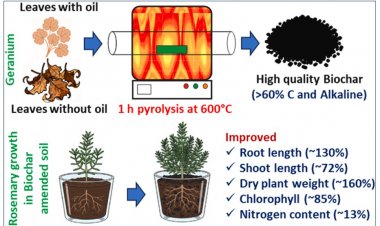Wheat turns from unwanted foodgrain stock to gold due to Russia-Ukraine war
With a steep rise in wheat prices in the global market due to the Russia-Ukraine war, India has a huge opportunity for exports. Farmers, too, may get a better price due to this. If exporters pay the farmers a price higher than MSP, it may lead to less government procurement of wheat. Farmers of Karnataka, Maharashtra, Gujarat, MP and Rajasthan will have an opportunity to sell wheat to the exporters at a price above the MSP while the dependence on Punjab, Haryana and UP will increase for government procurement. The price increase in the international market has come just at the right time as the wheat crop is soon to hit the market in India.

The Russia-Ukraine war has taken wheat prices to a new high in the international market. The prices of not only wheat but most food items have reached the highest yet. This situation is advantageous for us because Indian wheat is in a highly competitive position in comparison to the prices in the global market. It may fetch the wheat-producing farmers better prices but it may also lead to a decrease in government procurement. The wheat stock in the Central Pool is at a three-year low at present. Russia and Ukraine are currently out of the wheat export market due to the war. In 2020-21, with exports of 590 lakh tonnes (lt), the share of these two countries was estimated at 28.3 per cent of the global export market. The current situation of war and the prices reaching record highs have created a new opportunity for exports from India.
On March 4, the price of wheat reached 1,348 cents per bushel on the Chicago Board of Trade (CBoT). This comes to $495.30 per tonne. A month ago, the price was 763.25 cents per bushel or $280.44 per tonne, while a year ago, it was 649.75 cents per bushel or $238.74 per tonne. A bushel is equal to 27.216 kg. If we consider the dollar currently at Rs 76, the price of wheat has reached Rs 37,643 per tonne or Rs 3,764 per quintal in the global market. Currently, a price of $400 is being bid for most wheat deals, which comes to Rs 3,040 per quintal. The prices, however, are rather higher than this.
According to the International Grain Council, the price of US No. 2 Hard Winter wheat stood at $505 per tonne for export on March 3 and that of US No. 2 Soft Winter wheat at $472 per tonne. The Grade Two wheat from Argentina was priced at $418 per tonne and the Grade A wheat from France at $427 per tonne. These prices are sufficient to estimate the wheat prices in the global market.
Let us now come to the wheat prices in the country. The Minimum Support Price (MSP) of wheat for the coming Rabi Marketing Season or RMS (2022-23), which starts at the end of this very month, is Rs 2,050 per quintal. This price comes to about $263 per tonne. As of now, the wheat delivery at the Kandla port stands at Rs 24,500 per tonne, which comes to $325 per tonne. Post the fobbing, bagging and port charges necessary for export, the free on board (FOB) price comes to $350 per tonne. Given this scenario, India may easily get deals to be delivered at the Kandla port at $350-375 per tonne. In Indian currency, this comes to Rs 26,000-26.600 per tonne. This is substantially higher than the MSP of Rs 20,500 per tonne.
This means that once the new crop comes, wheat from Rajasthan, Madhya Pradesh (MP), Gujarat, Karnataka and Maharashtra may go towards export in large quantities. If the trader pays even a little above the MSP, he has an opportunity to earn a profit on the wheat to be exported at the Kandla and Mundra ports and he will not be willing to lose it. Thus, India has the opportunity to export a large amount of wheat. Also, given this situation, the dependence on Punjab, Haryana and Uttar Pradesh (UP) will increase for government procurement. This will ameliorate the lot of the farmers of these states, too.
In its report on 9 February 2022, the US Department of Agriculture (USDA) had estimated that the global export trade of wheat would stand at 20.845 crore tonnes in the year 2021-22. Of this, the share of Russia and Ukraine was estimated at 590 lt or 28.3 per cent. But the ongoing war between Russia and Ukraine has put paid to the possibility of so much of exports from the two countries. India has the opportunity to fill this gap. The closure of Black Sea ports due to the war has cut Ukraine off from the global market. Besides, sanctions have been imposed on Russia and several of its banks excluded from the main international payment system, Swift.
As far as wheat export from India is concerned, it has been going up for the last three years. 1.8 lt of wheat was exported from here in 2018-19, 2.2 lt in 2019-20 and 20.9 lt in 2020-21. During the current financial year 2021-22, 50.04 lt of wheat has been exported from April to December and it is hoped that it will surpass the 2012-13 record of 65.10 lt by the end of the financial year. If the war continues for long, the wheat export from the country may go up to 150 lt.
The wheat stock was 236.60 lt in the central pool on 1 March 2022. Last year at this time, the stock was 295.40 lt while it was 275.20 lt and 201.10 lt in 2020 and 2019 respectively. This means the wheat stock is at a three-year low.
Regarding the wheat prices reaching record levels in the international market and the current crop, Harish Damodaran, a Senior Fellow of the Centre for Policy Research (CPR), says, “The wheat stock is in a better situation at present, but it would be too soon to say anything about the wheat crop this year.” Three factors have to be taken into account for this. Firstly, there often remain apprehensions of hailstorms in the days to come. Secondly, the temperature for the next one month is crucial to the crop. If it rises suddenly, it may have an adverse impact on wheat productivity. Thirdly, there was a crisis of the availability of fertilizers, especially DAP, during the sowing of wheat this year and even after that. This condition may also impact wheat productivity. Therefore, the high global prices and the level of wheat export from India will be crucial for the domestic market and the farmers.
The offtake of wheat from the Food Corporation of India (FCI) stock was only 272.2 lt in 2019-20, which went up to 367.90 lt in 2020-21. In 2021-22, 510.10 lt of wheat has been allotted under the Targeted Public Distribution System (TPDS). Of this, there was an offtake of 339.80 lt of wheat during April-December 2021 and this may cross 430 lt by the end of the year. This may be greater than the government procurement last year.
If we look at the figures for government procurement of wheat, it was 389.90 lt from the 2019-20 crop and 433.40 lt from the 2020-21 crop. But there is little possibility of the government procurement of wheat reaching this level this year. Similarly, it is not likely either that there will be as much of wheat offtake from the FCI stock as there was due to Covid-19.
If exports increase due to the high prices obtained on account of the war between Ukraine and Russia, it will have a direct impact on government procurement. In this case, the free distribution of wheat as had been done due to low prices will perhaps not be feasible now, because wheat has now become an expensive product instead of being a non-essential stock. The timing of prices reaching record levels is also very appropriate for the farmers because it is the time when the crop of wheat is about to hit the market. However, one will have to watch if the government is willing to allow the exporters and the farmers to take full advantage of this export opportunity. Or will it come up with sanctions in the name of curbing rising prices and maintaining domestic availability? However, the government will have enough of stocks and it should, therefore, refrain from imposing sanctions of any sort. After all, this opportunity of exporting large quantities of wheat has come for India after a long time.



 Join the RuralVoice whatsapp group
Join the RuralVoice whatsapp group






































